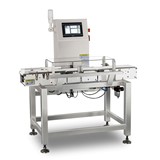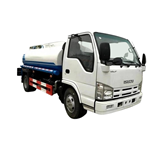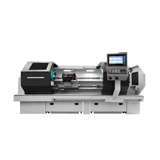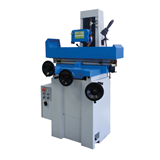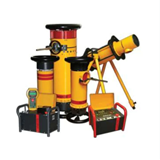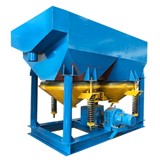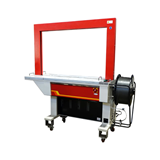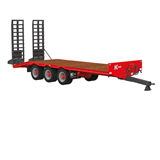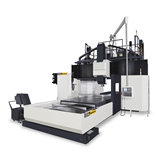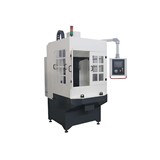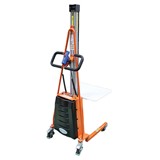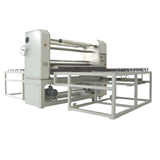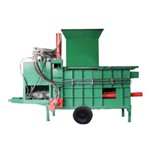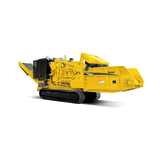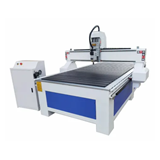Looking for an equipment loan in Australia? Learn how to qualify, compare lenders, and avoid hidden costs. Includes real-world examples and advice tailored to industrial businesses.
Key takeaways
- Equipment loans are a major funding tool for Australian businesses—over 60% of SMEs use some form of asset finance (NAB SME Business Insights, 2023).
- Loan terms typically range from 2–7 years, with interest rates between 7.5% and 11.5% p.a., depending on equipment type, business credit, and lender.
- Loan amounts range from $10,000 to over $5 million, with low-doc options often capped at $500,000 for eligible SMEs.
- Tax advantages apply: Interest and depreciation on financed equipment are tax-deductible (ATO, 2024).
- Eligibility requires an ABN, GST registration, and trading history—typically 6–12 months minimum.
- Finance is available for both new and used machinery, including CNC machines, forklifts, excavators, compressors, packaging lines, and more.
- Fast approvals in under 48 hours are possible through specialised non-bank lenders offering low-doc or alt-doc equipment finance.
- Equipment acts as security—no need for separate property collateral in most cases.
- Application tip: Prepare a clear business case showing ROI and productivity gain to strengthen approval chances.
Introduction
Industrial equipment and machinery are often the backbone of Australian operations—from construction and agriculture to manufacturing and logistics. Yet, with new equipment often costing tens or hundreds of thousands of dollars, few businesses can afford large upfront purchases.
This is where equipment loans come into play. These financing products allow you to acquire essential assets while preserving cash flow and accessing potential tax advantages.
In this comprehensive guide, we’ll break down:
- What equipment loans are
- How they work
- Key terms and eligibility criteria
- Tips to increase your chance of approval
- Common pitfalls to avoid
- And answers to the most frequently asked questions by Australian business owners
Whether you're looking to upgrade a CNC machining centre or purchase a new fleet of forklifts, this guide is designed to give you the confidence to navigate equipment loans effectively.
What is an equipment loan?
An equipment loan is a type of business finance specifically used to purchase physical assets—typically machinery, vehicles, tools, or industrial equipment.
How it works
- The lender provides a lump sum to buy the equipment.
- The asset acts as collateral for the loan (also called a “chattel mortgage”).
- You repay the loan over a fixed term in monthly instalments, which include principal and interest.
Once the loan is fully repaid, you own the asset outright.
Types of industrial equipment commonly financed
In Australia, equipment loans are widely used across many sectors. Commonly financed industrial equipment includes:
- Construction: Excavators, graders, loaders, dump trucks
- Manufacturing: CNC machines, press brakes, form fill seal machines
- Transport & Logistics: Refrigerated trucks, forklifts, pallet jacks
- Agriculture: Harvesters, sprayers, tractors
- Warehousing & Packaging: Automatic strapping machines, orbital wrappers
Key terms to understand
Before signing any equipment loan agreement, it's vital to understand the following terms:
1. Loan amount
- Ranges from $10,000 to $5 million+
- Based on the equipment’s value, your business turnover, and credit rating
2. Term length
- Typically 2 to 7 years
- Longer terms reduce monthly payments but may cost more in total interest
3. Interest rate
- 7.5%–11.5% p.a. for most businesses in 2025
- Factors: Equipment type, business credit score, lender type (bank vs non-bank)
4. Balloon payment
- A lump sum payable at the end of the loan to reduce monthly payments
- Often used in transport and fleet finance (e.g. 20% balloon at end of term)
5. Ownership
- Unlike leases, you own the asset once the loan is paid off
6. Security
- The asset itself is usually the security—no need to use property as collateral
Eligibility criteria for Australian businesses
Most lenders require the following to approve an equipment loan:
- ABN – Your business must have an active Australian Business Number.
- GST registration – Required if your business turnover exceeds $75,000 per year.
- Trading history – Most lenders expect at least 6–12 months of operating history, although some low-doc lenders will consider businesses with as little as 3 months of trading.
- Credit history – A good to excellent credit score increases your chances of approval and lowers your interest rate. However, alt-doc options are available for businesses with less-than-perfect credit.
- Financials – You may be asked to provide recent business bank statements, Business Activity Statements (BAS), or basic financial reports such as a profit and loss statement.
Tip: Some lenders offer low-doc or no-doc equipment loans, which require minimal paperwork—making them a great option for newer businesses or sole traders needing fast approval.
Application process: Step-by-step
1. Identify equipment and supplier
- Obtain a formal quote or proforma invoice from a trusted supplier.
- Make sure the model is eligible for finance (some lenders have restrictions on age/condition).
2. Choose a lender
- Options include:
- Banks: Lower rates, more paperwork
- Non-bank lenders: Faster approval, flexible terms
3. Submit application
- Required documents may include:
- Business ID (ABN, ASIC registration)
- 3–6 months of bank statements
- Equipment invoice or quote
- Financials or BAS
4. Lender assessment
- Lender checks:
- Ability to repay
- Equipment resale value
- Industry stability
- Credit score
5. Approval and settlement
- Once approved:
- Loan documents are issued for signing
- Funds are paid directly to the equipment supplier
- Equipment is delivered to your site
Benefits of equipment loans
- Cash flow preservation: Pay in instalments instead of a lump sum
- Asset ownership: Equipment is yours once loan is repaid
- Tax deductions: Interest and depreciation may be deductible (ATO guidelines)
- Fixed payments: Easier budgeting over time
- No property security: The asset serves as collateral
Common pitfalls to avoid
- Not checking the full cost (including interest, fees, balloon payments)
- Overcommitting to longer terms with high interest
- Poor maintenance reducing equipment resale value
- Failing to compare lenders—rates can vary by up to 4%
- Assuming GST is included in finance—often it must be paid upfront or separately
Tips to improve approval odds
- Maintain strong cash flow: Lenders prefer businesses with surplus income.
- Have your documents ready: Including bank statements, BAS, and credit file.
- Get a detailed supplier quote: Include serial numbers and condition if used.
- Provide a business case: Show how the equipment improves efficiency, revenue, or compliance.
- Avoid multiple applications: Each hard enquiry affects your credit score—compare first, then apply.
Alternative options to consider
If an equipment loan isn’t the right fit, consider these alternatives:
- Lease – Best for short-term use or when you don’t need to own the asset. Lease payments are typically tax-deductible, but you don’t own the equipment at the end of the term.
- Hire Purchase – Ideal when you want eventual ownership of the equipment. It works similarly to a loan, but GST is claimed upfront on the full purchase price.
- Chattel Mortgage – Suited for long-term use with full asset ownership. This is the most common structure used for equipment loans in Australia, offering fixed repayments and tax benefits.
- Equipment Rental – Useful for seasonal projects or temporary needs. Rentals offer flexibility without long-term commitment, though they generally cost more over time compared to loans or leases.
Real-world cost examples by equipment type
Understanding how equipment loans work in real terms can help you make more confident and informed decisions. Below are three real-world finance scenarios using common industrial equipment types in Australia.
These examples are based on 2025 loan conditions and average market pricing.
Example 1: CNC Horizontal Machining Centre
- Equipment cost: $120,000 (new)
- Loan structure: 5-year term, 10% balloon, 8.5% interest rate
- Monthly repayment: ~$2,065 (excluding GST)
- Balloon payment at end of term: $12,000
- Total cost of finance: ~$136,000 over 5 years
Use case benefit: Increased production capacity by 25%, enabling $60,000+ in new contracts annually. Equipment fully depreciable under ATO Division 40 guidelines.
Example 2: Wheel Loader (Used, Mid-Tier Model)
- Equipment cost: $85,000 (used, 3 years old)
- Loan structure: 4-year term, no balloon, 9.2% interest rate
- Monthly repayment: ~$2,125
- Total cost of finance: ~$102,000 over 4 years
Use case benefit: Enables quarry business to bring bulk handling in-house, reducing subcontracting costs by $3,000/month. No property security required—equipment serves as collateral.
Example 3: Refrigerated Truck for Logistics Fleet
- Equipment cost: $160,000 (new, fully fitted)
- Loan structure: 6-year term, 20% balloon, 7.9% interest rate
- Monthly repayment: ~$2,200
- Balloon payment at end of term: $32,000
- Total cost of finance: ~$190,000 over 6 years
Use case benefit: Expands cold freight capacity by 18%, unlocking access to new metro food clients. Payments matched to revenue cycle. Fuel and service costs projected 12% lower than older vehicle being replaced.
Key insights:
- Monthly repayments vary widely depending on term length, balloon structures, and interest rate.
- Used equipment often has slightly higher rates, but can still be financed efficiently.
- Longer terms reduce monthly costs, but result in higher overall interest paid.
- Tax savings on depreciation and interest can significantly offset total cost—particularly when paired with strong ROI from asset productivity.
FAQs: Understanding Equipment Loans in Australia
1. Can I get an equipment loan with bad credit?
Yes, but expect higher interest rates. Some non-bank lenders specialise in bad credit loans or use cash-flow-based lending instead of credit scores.
2. Are second-hand machines eligible?
Yes—used equipment is financeable, though the lender may limit the maximum age or request a valuation.
3. Do I pay GST on financed equipment?
Yes, GST is typically paid upfront unless it's included in the loan. Check with your accountant to ensure proper treatment on your BAS.
4. What’s the difference between a lease and a loan?
- A lease involves renting the equipment—you don’t own it.
- A loan means you own the equipment and repay the borrowed amount.
5. How long does approval take?
- Banks: 5–10 business days (with full documents)
- Non-bank lenders: 24–72 hours (low-doc or streamlined)
6. Is there a deposit required?
Not always. Many loans offer 100% finance, meaning no upfront deposit. However, some lenders may require 10–20% down for higher-risk applicants.
7. What happens if I want to upgrade the equipment mid-loan?
Some lenders allow loan top-ups or trade-ins. You can refinance the existing loan or pay it out early—check for exit fees.
8. Can I pay off the loan early?
Yes, but check for early repayment fees. Some lenders offer flexible terms without penalty, especially non-bank lenders.
Conclusion: Make your equipment finance work for you
An equipment loan can be a powerful tool to grow your operations, improve productivity, and stay competitive, especially in capital-heavy industries. But it’s essential to understand the terms, choose the right lender, and structure the finance to suit your cash flow and asset life.
By doing your research and preparing the right documentation, you can access the equipment you need without putting strain on your cash reserves.
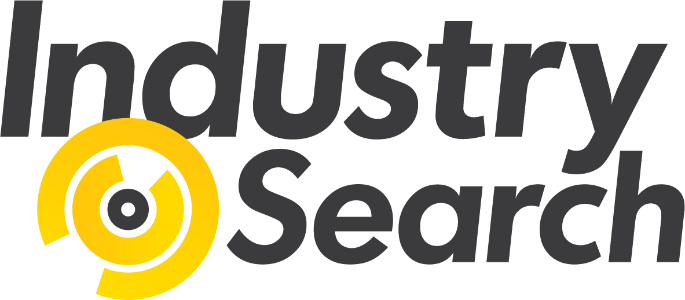

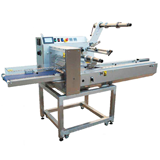
-160x160-state_article-rel-cat.png)

